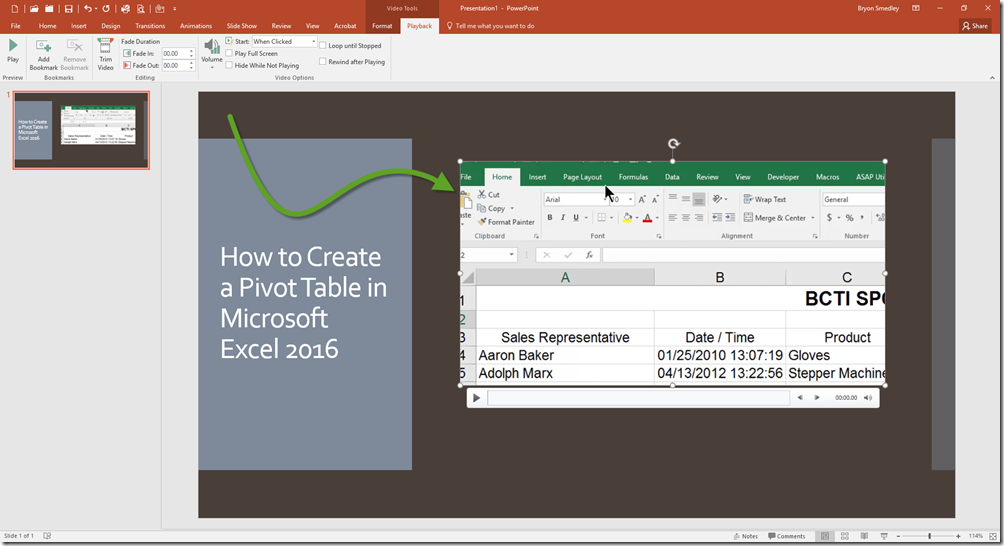If you have ever been tasked with creating a video to demonstrate come process in an application, like creating pivot tables in Excel or performing a mail merge in Word, you probably had to spend a bit of money on some screen capturing software. There are many great programs on the market designed specifically for capturing and editing computer screen activity; Camtasia is one of my personal favorites.
If you are in a position where you need to record something quickly, without spending any additional money, and are content with simple editing, PowerPoint 2016 has just the tool for you; it’s called Screen Recording.
Screen Recording is a new feature in PowerPoint 2016 (or, if you have the latest service pack update to PowerPoint 2013) and is located in the Media group of controls in the upper-right corner of the Insert ribbon.

The Screen Recording feature will allow you to capture both video AND audio into a video file that can then be embedded into a PowerPoint slide. This eliminates the need for third-party software when creating simple screen recordings.
Steps for Use
If you are recording an application OTHER THAN PowerPoint, launch or switch to that application and then switch back to PowerPoint. The reason for this step is because PowerPoint will automatically switch to the last used application prior to launching the screen recording tool. (NOTE: If you are trying to record a series of steps in PowerPoint, you will need to manually switch back to PowerPoint after you have launched the screen recorder. In theory, you could record a video of how to record a video. This get very “Hall of Mirrors” at this point and should be approached with caution <wink>.)
When you click the Screen Recording button, PowerPoint will switch to the previously selected application and then wash your screen out with a faded haze. The idea here is that you are going to select an area of the screen to record. To do this, click the Select Area button and then drag a diagonal box around the part of the screen that is to be recorded.


If you’re not happy with the selected area, not to worry; simply click the Select Area button and try again.
After you have selected the recording area, click the Record button. This will provide you with a 3-second countdown timer. When the timer expires, everything contained within the designated recording area will be captured.
Now, here’s the tricky part… stopping the recording.
Because the small control panel that contains the Record button disappears when screen recording starts, we have to stop the screen recorder with a key-combination. The magic key combination is Windows-SHIFT-Q (or ![]() -SHIFT-Q). Once the recorder has been stopped, the recorded content will be placed onto the last selected slide in your PowerPoint presentation.
-SHIFT-Q). Once the recorder has been stopped, the recorded content will be placed onto the last selected slide in your PowerPoint presentation.

From here, you can utilize all of the standard video editing and video enhancement tools that are standard with PowerPoint, such as:
- Edit the beginning or end of the video to trim off unneeded content
- Control when the video plays (via Play button or automatically) and whether it play in a window or full screen
- Apply a frame or other cosmetic treatment to the border of the video
- Alter the color of the video (i.e. blank-and-white, sepia, etc…)
- Establish a poster frame for display when the video is not playing
and more…
Now, the Screen Recording tool doesn’t contain all the fancy frills of your favorite 3rd-party screen capture application, but for what it costs, it’s pretty darn good.
